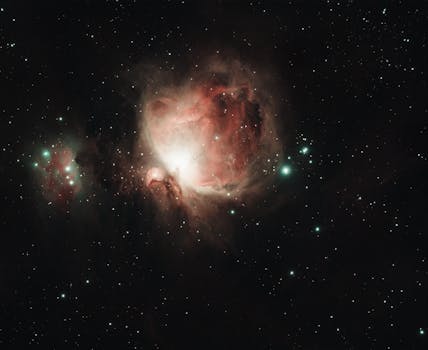
“
From Stardust to Dreams: Imagining Life Beyond the Stars
Introduction to Cosmic Wonders
From Stardust to Dreams: Imagining Life Beyond the Stars is a journey that begins with the understanding that we are all made of stardust. The elements that compose our bodies, our planet, and our stars are all remnants of ancient stellar explosions. This realization sparks a profound curiosity about the universe and our place within it. As we explore the cosmos, we are driven by the question: are we alone? The possibility of life beyond Earth has captivated human imagination for centuries, inspiring countless scientific investigations, literary works, and philosophical debates. For a deeper dive into this topic, check out Soaring Through the Cosmos: The Power of Imagination Beyond the Stars.
The Building Blocks of Life
The foundation of life as we know it is based on carbon, hydrogen, oxygen, nitrogen, and a few other elements. These elements are forged in the hearts of stars through nuclear fusion. When stars die, they expel these elements into space, where they can become part of new stars, planets, and potentially, new life forms. The discovery of exoplanets, some of which are located in the habitable zones of their stars, has intensified the search for signs of life beyond Earth. Space missions like Kepler and TESS have identified thousands of exoplanets, a significant portion of which could harbor conditions suitable for life. Understanding these building blocks is essential for anyone interested in imagining life beyond our planet.
Imagining Life Beyond Our Planet
Imagining life beyond our planet involves considering a vast array of possibilities. Life could exist in forms that are familiar to us, such as carbon-based organisms that thrive in conditions similar to those of Earth. Alternatively, life could be utterly alien, based on different chemistries and existing in environments that would be lethal to known life forms. The discovery of extremophiles on Earth, organisms that can survive in extreme conditions, expands our understanding of what life can endure and suggests that life might be more resilient and adaptable than previously thought. For more on this topic, explore Galaxies of Dreams: How Imagination Transcends the Night Sky.
Takeaways
- The universe is vast and full of mysteries waiting to be uncovered.
- The possibility of life existing elsewhere in the universe is considered to be quite high by the scientific community.
- Exploring space and searching for life beyond Earth is a complex, ongoing effort that involves international cooperation and cutting-edge technology.
- Understanding the building blocks of life and how they are distributed throughout the universe is key to imagining and searching for life beyond our planet.
Conclusion: The Eternal Quest
The quest to understand if we are alone in the universe is an eternal and profound question that has haunted humanity for centuries. From the stardust that composes our bodies to the dreams of exploring the cosmos, our journey to discover life beyond Earth is driven by an insatiable curiosity and a deep-seated desire to understand our place within the universe. As we continue to explore, discover, and imagine, we are reminded that the universe is full of secrets waiting to be uncovered, and the dream of finding life beyond our planet is a beacon that guides us forward into the unknown.






